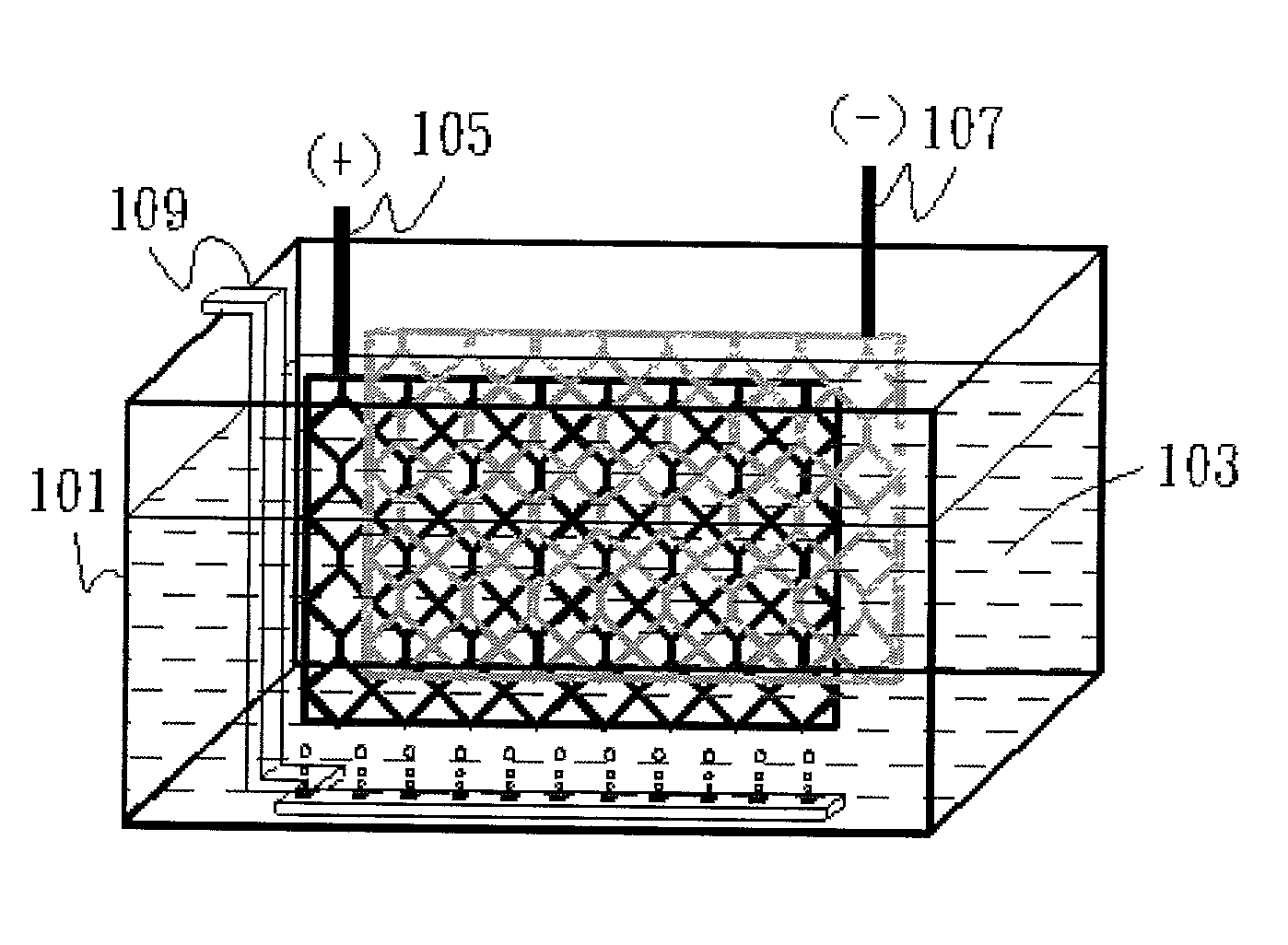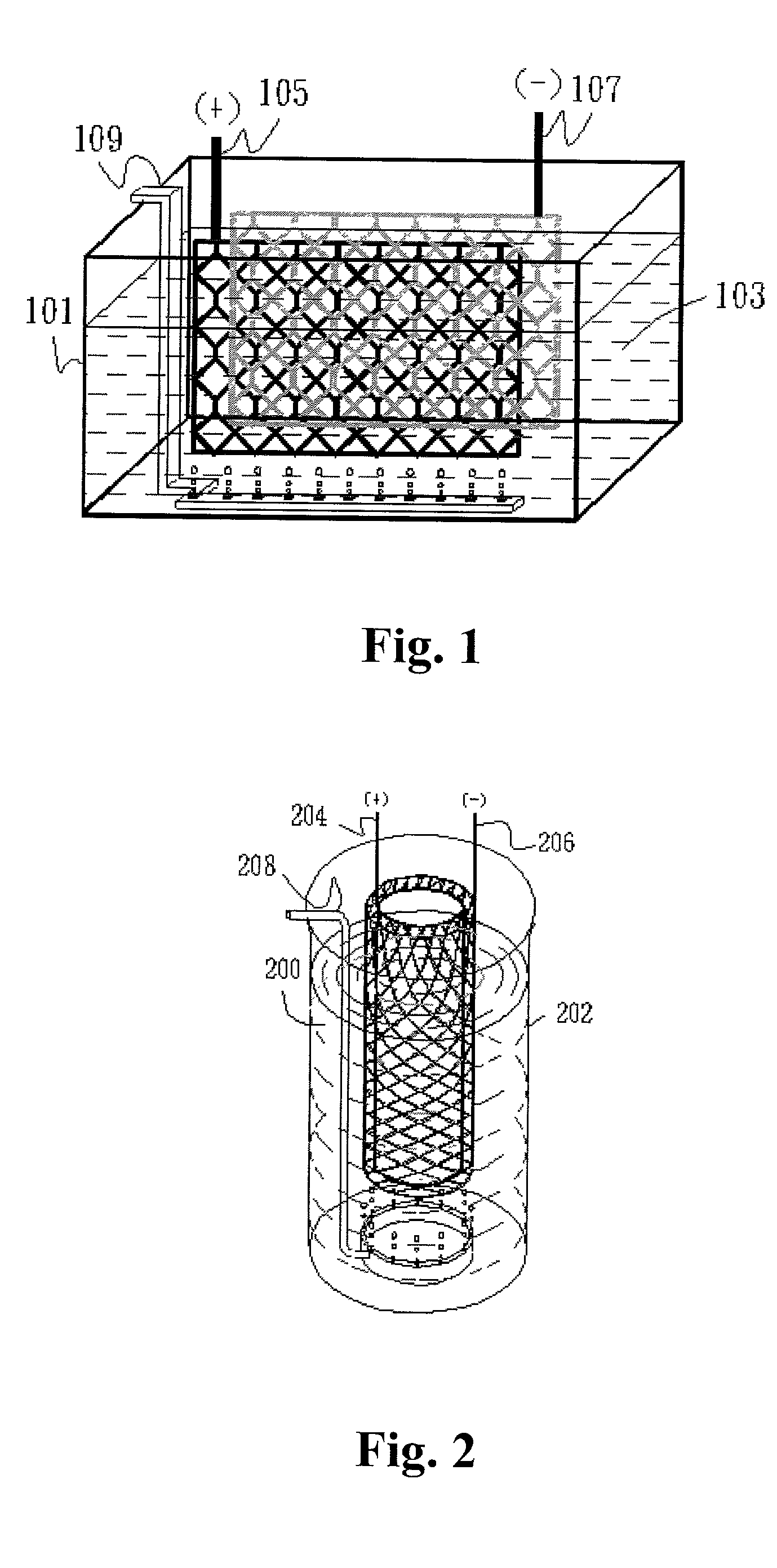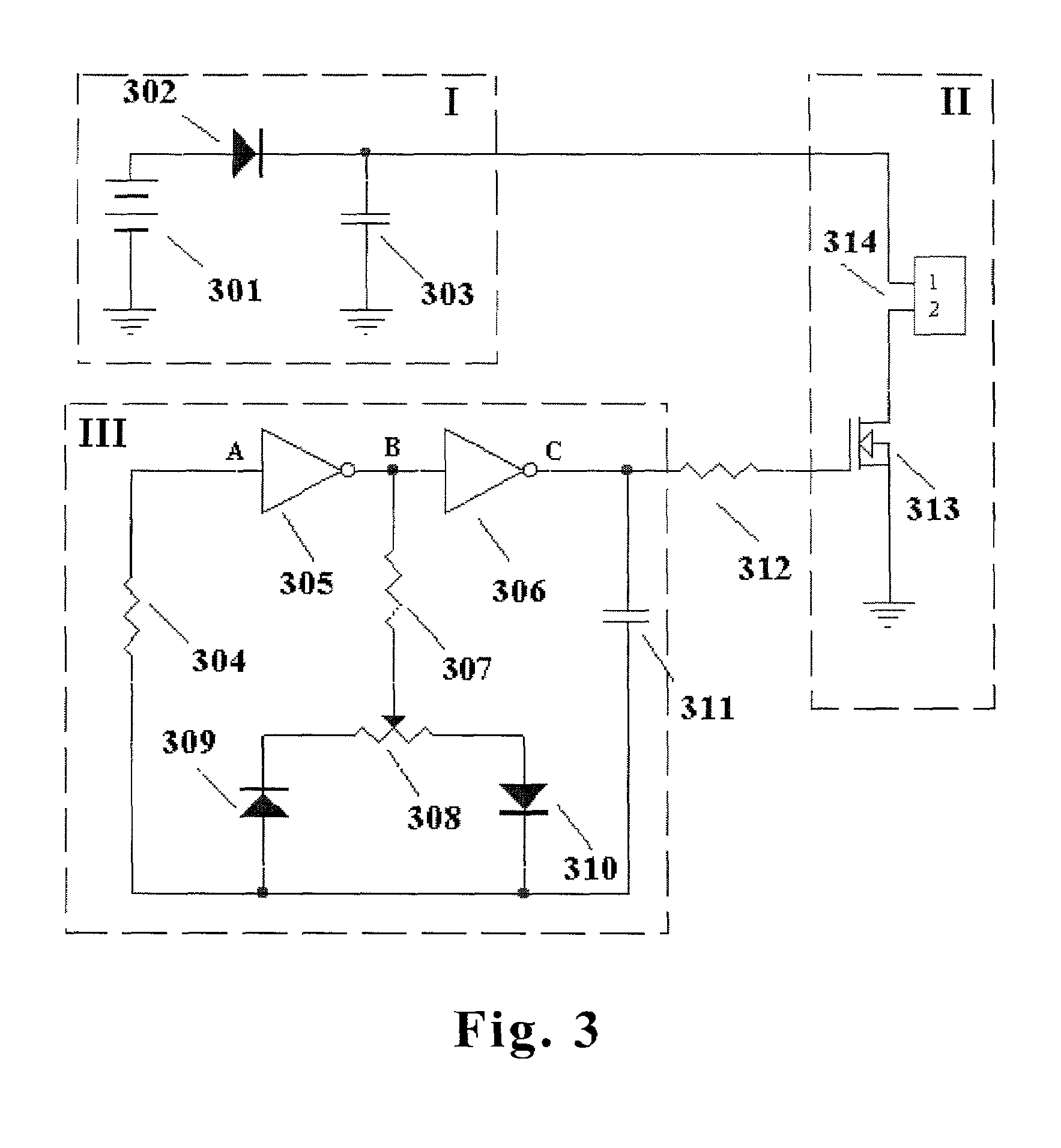Electrolytic cell for ozone generation
a technology of electrolysis cell and ozone, which is applied in the direction of electrochemical machining apparatus, energy-based wastewater treatment, and disinfection, can solve the problems of decomposition of many organic compounds, and achieve the effect of increasing the oxygen content of water, avoiding oxidative stress, and effective and fast preparation techniques
- Summary
- Abstract
- Description
- Claims
- Application Information
AI Technical Summary
Benefits of technology
Problems solved by technology
Method used
Image
Examples
example 1
[0023]Using an electrolytic cell as shown in FIG. 1, different amount of ozone was generated under various constant DC voltages. The electrolytic cell employed the following conditions:[0024]Anode: Ti / Pt / β-PbO2 [0025]Cathode: Ti / Pt[0026]Electrode area: 10 cm2 [0027]Voltage: constant voltages from a DC power supply[0028]Electrolyte: 100 ml of 1 wt. % NaCl aqueous solution[0029]Bath temperature: ambient[0030]Air flow rate: 1 l / min[0031]Electrolysis time: 1 minute
The ozone concentration was determined using iodometric method. The ozone concentration together with the current recorded under each applied voltage are listed in TABLE 1.
[0032]
TABLE 1Ozone Yields under Different DC VoltagesApplied Voltage (V)Current Recorded (A)O3 Yield (mg)60.280.79100.671.68120.901.98161.302.13181.642.18201.602.00243.101.50
[0033]When the ozone yield is plotted against the applied voltage, FIG. 4A is resulted. As seen in the drawing, the ozone generation reaches maximum around 18 volts in the above electrol...
example 2
[0034]Same electrolytic apparatus and same electrolysis conditions as example 1, different ozone concentration was generated potentiostatically using 24 DC volts and different electrolytes. The outcome is as follows:
[0035]
ElectrolytesCurrent (A)O3 Yield (mg)10 wt. % NaCl3.122.7930% NaCl6.341.9810 wt. % KNO31.980.0410 wt. % NaBF40.540.03
example 3
[0036]Same electrolytic apparatus as Examp1, except the electrolyte, a 10 wt. % NaCl aqueous solution, was flowed through the electrodes in two flow rates. Ozone was generated and cumulated in 100-ml of effluent collected. The ozone concentration at each flow rate was determined using iodometric titration.
[0037]
Flow rate (ml / min)Current (A)O3 Yield (mg)300.982.571000.741.67
[0038]It is obvious that a continuous on-line ozone treatment for disinfection of water is feasible using the present invention.
PUM
| Property | Measurement | Unit |
|---|---|---|
| current efficiency | aaaaa | aaaaa |
| current efficiency | aaaaa | aaaaa |
| ozone current efficiency | aaaaa | aaaaa |
Abstract
Description
Claims
Application Information
 Login to View More
Login to View More - R&D
- Intellectual Property
- Life Sciences
- Materials
- Tech Scout
- Unparalleled Data Quality
- Higher Quality Content
- 60% Fewer Hallucinations
Browse by: Latest US Patents, China's latest patents, Technical Efficacy Thesaurus, Application Domain, Technology Topic, Popular Technical Reports.
© 2025 PatSnap. All rights reserved.Legal|Privacy policy|Modern Slavery Act Transparency Statement|Sitemap|About US| Contact US: help@patsnap.com



